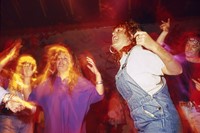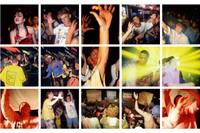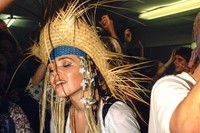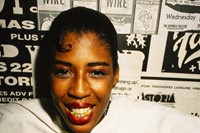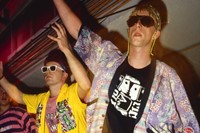As his new book is released, photographer Dave Swindells describes the explosion of Acid House culture as “life-changing, the biggest youth cultural revolution since the 60s”
Following the sell-out success of Ibiza ’89, photographer and nightlife chronicler, Dave Swindells, has revisited his extensive archive for another compelling volume. Technically, Acid House As It Happened is a prequel, with the action taking place over nine months in 1988, mostly in London nightclubs.
“That year was mad,” Dave Swindells tells AnOther with a laugh. “It started off fast, and carried on getting faster and faster.” The book covers March to November 1988, with each set of photos attributed to a particular club night. Their significance? Shoom, Future and Spectrum took place in a golden era; “[it was] the beginning of Acid House but before the tabloid backlash which lifted the lid on the scene and permanently changed it.”
House music was new, ecstasy had just become available, and few outside the scene knew it was going on. Looking back, Swindells describes it as a honeymoon. He even valued the secrecy of the scene above his role as a nightlife editor at Time Out – by either not publicising certain parties or omitting the venue information, so strong was his desire to protect the intimate scale of the early scene. “We had to be cautious because we didn’t want to kill this baby before it had the chance to grow up,” he says. This was partly to stop the fledgling scene from being swamped by too many punters, but also to keep it off the radar of authorities, as drug consumption would’ve been all too noticeable. Swindells also avoided publishing photos in which clubbers appeared overly spangled in Time Out.
He describes the explosion of Acid House culture as “life-changing, the biggest youth cultural revolution since the 60s. Dance music developed dramatically from that moment. The whole London club capital couldn’t exist without it, neither would we have dance music, or EDM as it became.” The conditions which allowed it “had already happened in Chicago and New York, with cheap, easily available technology to produce music, like samplers and 303s. UK DJs like Mark More with S’Express, Coldcut, CJ Mackintosh and Bomb The Bass released records,” which DJs Danny Rampling, Paul Oakenfold and Terry Farley played out. Meanwhile, ecstasy created “this great collective rush and buzz, people bouncing around with their hands in the air”.
The magic of the era has been mythologised in TV, film and numerous books, but Swindells describes it as genuinely liberating. “People were carefree, living a different kind of dream,” he says. “Even if you just did it a couple of times, it opened up the world and you didn’t look at things in the same way.” Revered nightlife writer Sheryl Garratt opens the evocative essay in the book, saying; “Everyone remembers their first time. It felt like the barriers that had separated us were finally falling. Age, class, race, gender, sexuality … For a brief, heady time, we really were one nation under a groove.”
It’s impossible to flip through Acid House As It Happened’s pages without smiling; its un-self-conscious subjects grin, embrace, and dance; sometimes with their eyes closed, lost in the moment. You can practically smell the sweat and smoke. The style of the era was anti-glamour; baggy clothes, little makeup, perspiration. Garratt describes how one protagonist “went to a club in her designer finery and came home in a T-shirt and her friend’s boxer shorts”. Swindells explains that the aesthetics were “a reaction against yuppie culture”, the materialistic, ‘greed is good’ culture of the 80s. A previous generation of clubbers, The New Romantics, were characterised by being exclusive, he says, only allowing those into the club who looked good enough. Acid House, on the other hand, was all about love and inclusion – Danny and Jenni Rampling’s club night, Shoom, described itself as a big family.

Later that year, the voracious British tabloids sensationalised the scene; the drugs, the moral corruption of the youth, and a few years later, the Conservative government sought to ban large scale raves and music with ‘repetitive beats’. After this, Swindells said, it was never quite the same.
If the scene was one of messy mayhem, its dedicated documenter, Swindells, was not. Out night after night, staying sober to better capture the hazy, laser-strewn atmosphere, using a wide-angle lens to improve focus in the dark, or with fast slide film to shoot without flash, using the club lasers as extra lighting. He meticulously documented each night, noting down the names of clubbers and DJs, and the resulting archive forms an important record of the time. DJ and co-editor of Faith Fanzine, Terry Farley, who played many nights at the time, recalls how respectful Swindells was. “People were more than happy for him to intrude into what was quite a secret world. Not many other photographers would have been welcome, but people trusted Dave and acted naturally around him.” I ask Farley about the vibe of 1988; “It was a magical time, very innocent and very special,” he says. “People tried to keep it secret. It wasn’t snobbery, people knew it if news got out, it would only go one way.”
Acid House As It Happened is published by IDEA and launches on 12 May 2022 at Dover Street Market London with an exclusive signing by Dave Swindells.

